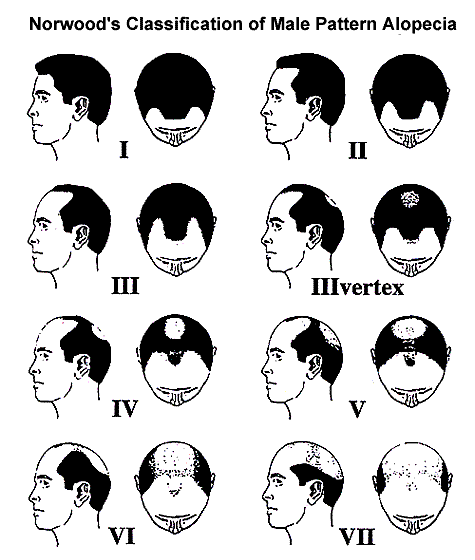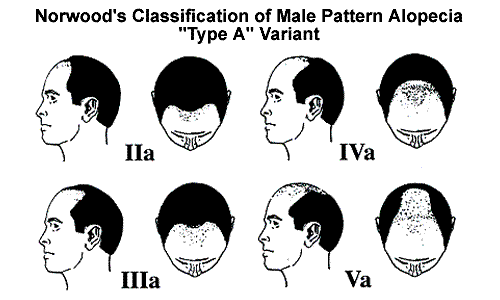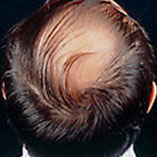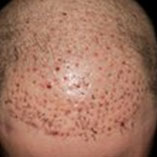Hair loss diagnosis
Which doctors diagnose hair loss?
If you are losing more hair than you think is normal, you might be suffering from some form of alopecia. If you notice the hair falling out suddenly or in clumps, patchy hair loss, red scalp or flaky scalp areas, loss of hair in different parts of the body, it is time to visit a medical specialist. The first type of physician who will pinpoint what causes your hair fall and can offer you a treatment and other options is a dermatologist.
How to diagnose hair loss?
Because so many things can cause hair loss, a dermatologist will examine the problematic area and may ask some questions:
- whether the hair loss happened suddenly or gradually
- what medicines or other substances you take
- what allergies you have
- if you have been dieting.
- women may be asked about their periods, pregnancies, and menopause.
During examination, the dermatologist may test the hair using the following methods:
- Densitometry - a technique that analyzes the scalp under magnification to mesure hair density, hair scalp diameter, give informations about follicular unit composition and degree of miniaturization of scalp hairs. Measuring parameters from different parts of the scalp is helpful and it can be used to predict future hair loss.
- Hair-pull - the physician grabs with his fingers a clump of 20-30 hairs and gently pulls on them. If five or more come out then the increased shedding may be associated with telogen effluvium, a reversible type of female hair loss determined by stress (during dificult situations, pregnancy, program changing, drug reactions, etc). Telogen effluvium usually occurs 2-3 months after a stressful event and affects 35-50% of one’s hair. Over 300 club hairs (telogen hairs that have rounded ends) may be shed per day.
- Hair pluck - using a clamp 20 to 30 hairs are forcibly plucked from the scalp. Afterwards the hair bulbs are examined under a microscope and the physician observe the ratio of anagen (growing) hairs to telogen (resting) hairs. If less then 80% of the follicles are in the anagen stage, this would suggest telogen effluvium. Other abnormalities of the hair shaft can be also observed, which may explain hair breakage and poor growth.
A dermatologist may also need to look at the hair on the rest of the body to see whether there is too little or too much hair in other areas.
Other test may be ordered to screen for underlying medical conditions: skin biopsies, blood tests, different hormones levels, etc.
Finally, the baldness of the pacient can be classified in one of the classes of patterned hair loss: for men - the Norwood Classification, and for women the Ludwig classification. This helps determine treatment directions and, if the option for a hair transplant is acceptable and possible, it can aid the hair surgeon in planning the hair transplant in a realistic way.
Hair loss classification
Men hair loss classification


The Norwood classification is the most widely used classification for men alopecia. It defines two major patterns and several less common types.
Norwood 1-4 class sufferers: the treatment aproach is possible first trough approved medication for the treatment of androgenetic alopecia - minoxidil (Rogaine) and finasteride (Propecia).
Norwood 5-7 class sufferers: after a consult with your doctor, 2 possible ways of dealing with alopecia might emerge: consider accepting your baldness or invest in a hair transplant.
Women hair loss classification

In all three Ludwig stages, the frontal hairline is relativelly preserved, and the back and sides may or may not be thinned. Evidently, only women with stable hair on the back and sides of the scalp are good candidates for hair transplant surgery.
Ask more!
Ask a medical representative a question about hair transplant:
Latest news
-

Transplant procedures can be somewhat painful mainly due to local anesthesia using injections into the scalp. But new procedures do not involve needles
-

Hair transplantation can be performed at any age, technicaly, but probably in many cases doctors recommend patients to wait up to an age close to 30 years.
-

-

Depending on the method used for harvesting grafts, recovery time can vary from a few days (FUE method) to 1-2 weeks (FUT or STRIP method)
-

Very important rules for a healty transition after hair transplant surgery.
-

What technique? FUE or STRIP? Advantages and disadvantages of each.
Latest forum posts
-


In the forums section you can receive informed answers (including from a medical representative) about hairtransplant issues, products or services of interest to you. Just ask!

